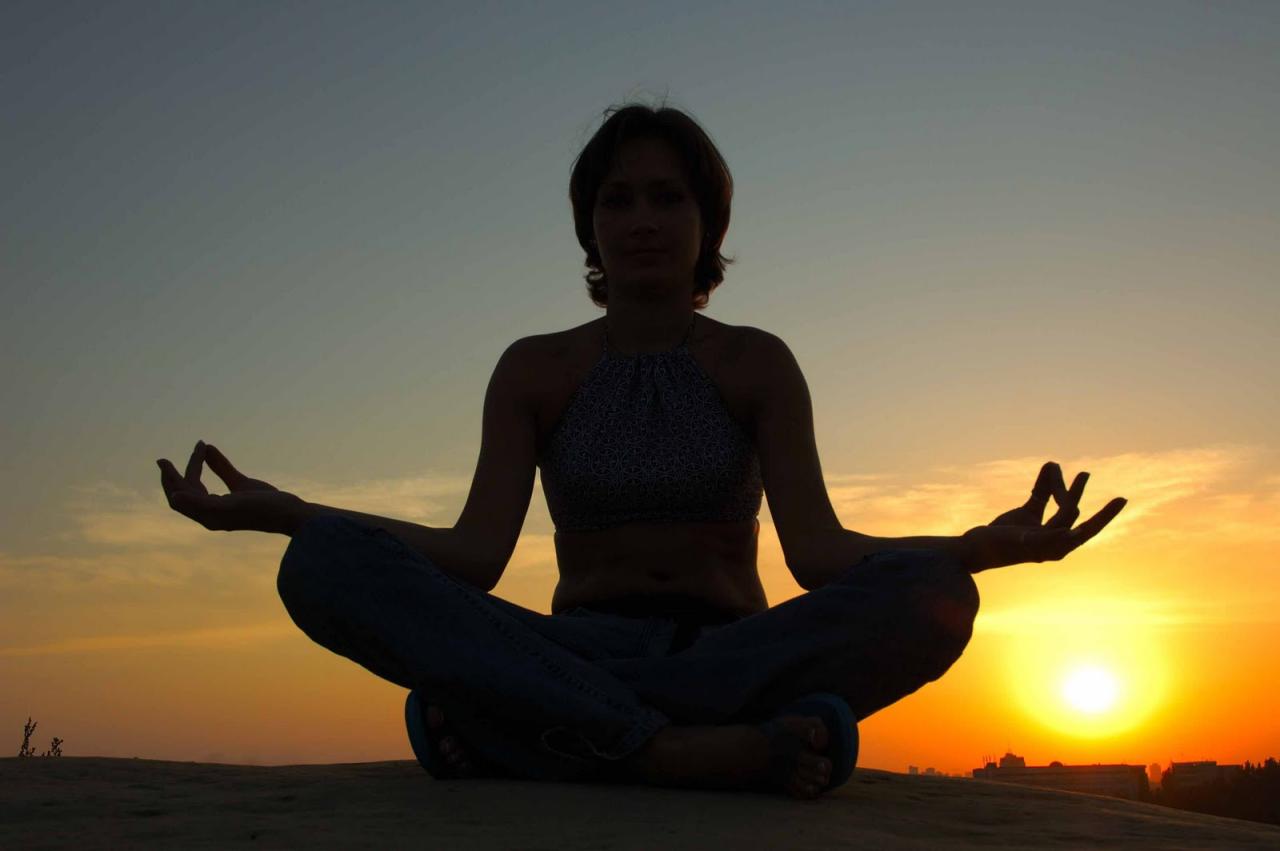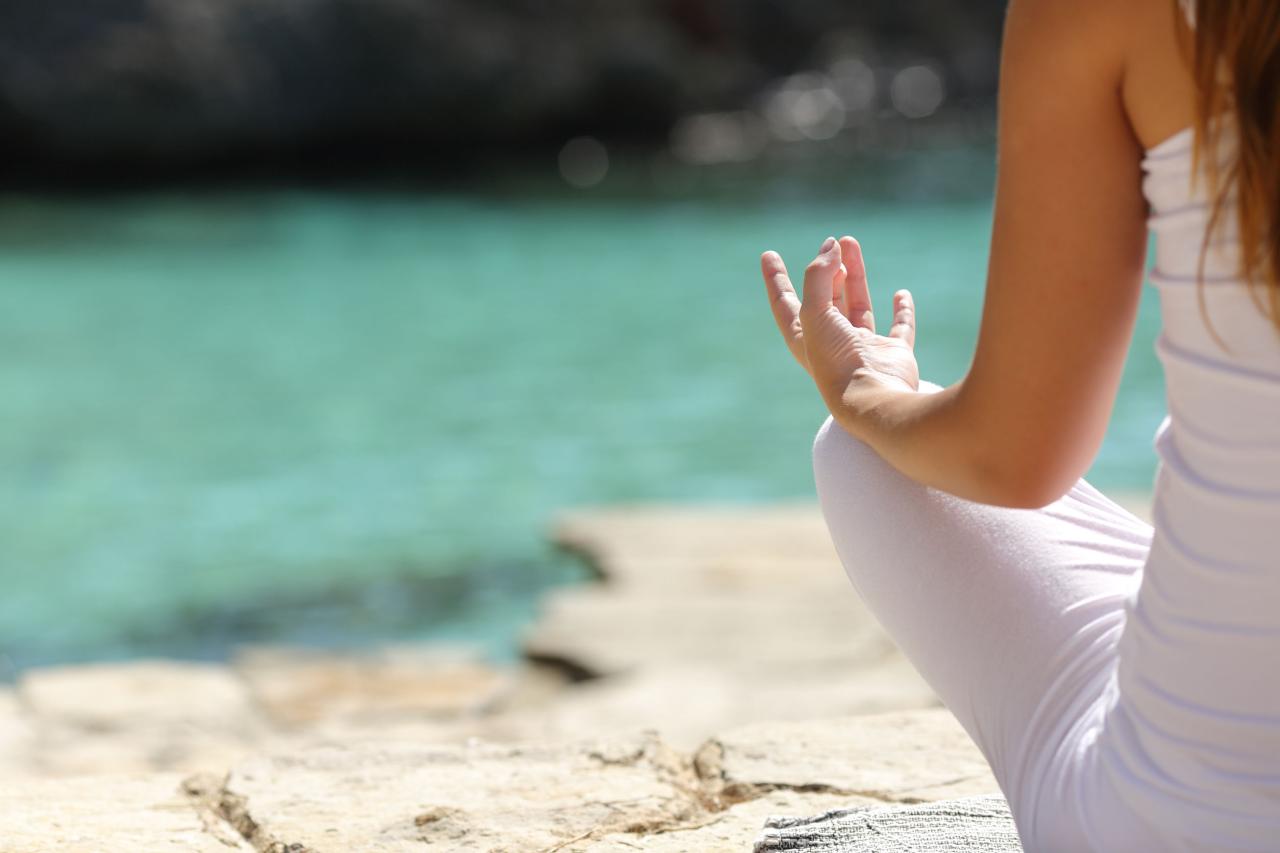Practicing mindfulness through walking meditation offers a gentle yet powerful way to cultivate presence and inner peace in daily life. This method combines the simplicity of walking with the depth of mindful awareness, making it accessible for everyone seeking mental clarity and emotional balance. By embracing this practice, individuals can transform ordinary walks into meaningful opportunities for self-discovery and stress reduction.
Understanding how to meditate for mindfulness in walking involves preparing appropriately, utilizing effective techniques, and overcoming common challenges. Whether in a tranquil park or an urban environment, this practice encourages a deep connection with the present moment, fostering greater awareness and well-being in everyday routines.
Introduction to Mindfulness Walking Meditation
Mindfulness walking meditation is a practice that combines the act of walking with the cultivation of present-moment awareness. It offers a gentle yet profound way to integrate mindfulness into everyday routines, fostering greater clarity, calmness, and emotional resilience. By deliberately paying attention to each step and the sensations in the body, practitioners develop a deeper connection to the here and now, which can significantly enhance overall well-being.
This form of meditation has roots that trace back thousands of years, originating from Buddhist traditions where walking was used as a mindful practice to cultivate awareness and concentration. Over time, it has been embraced globally as a practical, accessible way to practice mindfulness outside of seated meditation, making it suitable for individuals of all ages and physical abilities.
Benefits of Combining Walking with Mindfulness Techniques
Integrating walking with mindfulness techniques offers numerous advantages that contribute to mental, emotional, and physical health. This combination allows practitioners to experience the benefits of mindfulness in a dynamic, embodied way, promoting a harmonious balance between body and mind.
- Enhances present-moment awareness: Walking naturally involves movement, which helps anchor attention to the sensations of each step, grounding awareness fully in the present moment.
- Reduces stress and anxiety: The rhythmic and deliberate nature of walking coupled with mindful breathing can calm the nervous system and diminish feelings of stress.
- Improves focus and concentration: Regular practice trains the mind to stay attentive, which can positively influence concentration in daily activities.
- Supports physical health: The physical activity involved in walking promotes cardiovascular health, joint flexibility, and muscle strength, while mindfulness enhances body awareness.
- Fosters a sense of connection and compassion: Walking mindfully in natural settings or community spaces can deepen feelings of connection with oneself, others, and the environment.
“Mindfulness walking meditation transforms ordinary walking into an enriching practice that nurtures both body and mind, cultivating peace amidst daily routines.”
Preparing for Mindful Walking

Preparation is a vital step in establishing a successful mindful walking practice. It involves selecting an appropriate environment, choosing comfortable clothing, setting a clear intention, and organizing necessary items to foster focus and ease during your walk. Proper preparation ensures that the practice becomes a calming and enriching experience, allowing you to fully engage with each step and arrive at a state of mindfulness seamlessly.
Thoughtful preparation helps to minimize distractions and enhance your ability to remain present throughout the walk. By attending to these details beforehand, you create an environment conducive to mindfulness, which can deepen your awareness, reduce stress, and promote a sense of tranquility. The following guidelines provide a comprehensive approach to preparing effectively for your mindful walking sessions.
Selecting an Appropriate Walking Environment
The environment where you undertake mindful walking greatly influences the quality of your experience. An ideal setting should be peaceful, safe, and free from excessive noise or interruptions. Nature-rich environments, such as parks, gardens, or quiet forests, are highly recommended because they offer natural sights, sounds, and textures that support sensory engagement and presence.
If outdoor options are limited, a quiet and open space like a secluded courtyard or a calm suburban street can also be suitable. The key is to choose a location that encourages a slow pace and minimizes distractions. Avoid busy sidewalks, crowded urban areas, or places with high traffic to maintain your focus and deepen your mindfulness practice.
Guidelines for Comfortable Clothing and Pacing
Comfortable clothing plays a significant role in facilitating relaxed movement and focus during your walk. Wear loose-fitting, breathable fabrics appropriate for the weather conditions. Layers are advisable in cooler climates, allowing you to adjust as needed. Comfortable footwear with adequate support, such as walking shoes or sneakers, helps prevent discomfort and injuries.
Maintaining an appropriate pacing during mindful walking is essential. The goal is to walk slowly enough to be aware of each movement and sensation. A pace of approximately 15 to 20 minutes per mile (about 1 mile every 15-20 minutes) provides ample opportunity for mindfulness. Focus on the sensations of lifting, stepping, and placing each foot, fostering a deliberate and attentive gait.
Setting an Intention or Focus Before Starting the Walk
Prior to beginning your mindful walk, it is beneficial to establish a clear intention or focal point. This acts as a mental anchor and guides your attention throughout the practice. Common intentions include cultivating gratitude, developing compassion, or simply being present with each step.
To set this intention, take a few moments to breathe deeply and reflect on your purpose for walking mindfully. You might silently affirm a phrase such as
“I walk with awareness and openness,”
or focus on your breath. This mental preparation aligns your mind with your practice, enhancing concentration and fostering a sense of purpose that sustains your mindfulness during the walk.
Necessary Items and Preparations
Preparing the right items ensures comfort and focus, enabling you to engage fully in your mindfulness practice without unnecessary distractions. Below is a responsive table detailing essential considerations for your mindful walking setup:
| Item / Aspect | Details / Recommendations |
|---|---|
| Environment | Choose a natural, quiet, and safe space with minimal noise and foot traffic. |
| Clothing | Wear loose, breathable, weather-appropriate attire with supportive footwear. |
| Duration | Plan for 20 to 30 minutes for a balanced practice, adjusting based on comfort and schedule. |
| Additional items | Optional: a small water bottle, sun protection, or a light jacket if weather conditions change. |
| Preparation | Arrive a few minutes early, do a brief breathing or grounding exercise to settle your mind. |
Techniques for Practicing Mindfulness in Walking

Practicing mindfulness during walking involves integrating attentive awareness with each movement, promoting a deeper connection to the present moment. Developing specific techniques can significantly enhance your ability to stay focused, calm, and centered as you walk. These methods help cultivate a non-judgmental attitude toward your experience, allowing you to observe sensations and surroundings with clarity and compassion.
By adopting various mindfulness techniques, you can transform a simple walk into a powerful practice of awareness and presence. Whether coordinating breathing with steps, anchoring attention to sensory inputs, or observing the environment without judgment, each approach contributes to developing a more mindful state of being during your walks.
Coordinating Breathing with Walking Steps
Harmonizing your breath with your stride is a foundational mindfulness technique that helps anchor your awareness and creates a rhythm for your walking practice. This coordination encourages a natural, relaxed breathing pattern that supports calmness and focus.
- Begin by walking at a comfortable pace, paying attention to your natural breathing rhythm.
- Observe the inhalation and exhalation, noting their length and quality without trying to modify them.
- Slowly synchronize your steps with your breath, for example, inhaling over two steps and exhaling over the next two steps.
- Maintain this rhythm, bringing gentle awareness to each inhale and exhale in relation to your steps.
- If your breathing becomes irregular, gently return your attention to the natural flow without self-criticism.
This technique supports both physical relaxation and mental focus, fostering a deeper sense of presence during walking.
Anchoring Attention to the Sensation of Feet on the Ground
Focusing on the physical sensations of your feet contacting the ground is a simple yet effective way to ground your awareness in the present moment. This technique cultivates stability and enhances sensory awareness, reducing wandering thoughts.
- As you walk, bring your attention to the soles of your feet.
- Notice the unique sensations at each step, such as the pressure, texture, and temperature of the ground beneath your feet.
- Pay attention to the shifting weight from heel to toe, recognizing the natural rhythm of your gait.
- If your mind drifts, gently redirect your focus back to the sensations of your feet on the ground, without judgment.
- You can enhance this awareness by silently noting sensations, such as “heel touches ground,” “ball of foot,” or “toe lifts.”
This approach encourages a tangible connection with your body and anchors your mind in the here and now.
Observing Surroundings Without Judgment to Enhance Awareness
Expanding your sensory awareness to include your environment without attachment or judgment deepens mindfulness and broadens your perceptual field. This practice cultivates openness and acceptance, reducing reactive tendencies.
- While walking, gently turn your attention to sights, sounds, smells, and tactile sensations in your surroundings.
- Allow each sensory input to come and go naturally, observing without labeling or evaluating.
- Acknowledge your reactions without judgment—whether you find a scent pleasant or a sound distracting—and let them pass without resistance.
- Maintain an attitude of curiosity and openness, recognizing each moment as it unfolds.
- This practice can be especially enriching in natural settings, where diverse stimuli enhance sensory engagement.
Observing without judgment broadens your awareness, promotes acceptance, and cultivates a compassionate attitude toward your experience and environment.
Methods to Use Body Scan or Sensations During Walking
Integrating body scan techniques into walking involves systematically bringing awareness to different parts of the body as you move. This method deepens physical and sensory awareness, fostering relaxation and presence.
- Begin by walking slowly, paying close attention to your body’s movements and sensations.
- Focus on your feet, noticing how they contact the ground, then move upward to your ankles, calves, knees, and thighs.
- Observe sensations such as tension, warmth, coolness, or tingling in each area without trying to change them.
- Continue scanning upward through your hips, torso, shoulders, arms, neck, and head, maintaining gentle awareness.
- If distracting thoughts arise, acknowledge them and gently return attention to bodily sensations.
This continuous, mindful scan helps integrate physical awareness with the experience of walking, promoting relaxation and a profound sense of connection with your body.
Mindfulness Techniques and Their Descriptions
| Technique | Description |
|---|---|
| Breath- synchronized Walking | Walking rhythmically aligned with natural breathing, fostering calmness and focused awareness through coordinated steps and breaths. |
| Foot Sensation Focus | Attending to the tactile sensations of each footstep, anchoring attention in bodily contact with the ground to enhance stability and presence. |
| Environmental Observation | Gently noting sights, sounds, and smells in the surroundings without judgment, cultivating openness and sensory clarity. |
| Body Scan During Walking | Systematically bringing awareness to different body parts as you walk, fostering physical relaxation and integration of bodily sensations. |
| Open Awareness | Maintaining a broad, non-reactive attention to the overall experience, accepting whatever arises during walking without attachment or aversion. |
Step-by-Step Guide to Walking Meditation
Walking meditation is a mindful practice that combines gentle movement with focused awareness, fostering a deep sense of presence. This structured approach guides practitioners through a series of intentional steps, ensuring a seamless transition from preparation to reflection. By following this sequence, individuals can cultivate a calm, centered mind while engaging fully with each step of their walk.
Maintaining focus during walking meditation requires gentle patience and consistent redirection of attention. Distractions are natural; acknowledging them without judgment allows the practitioner to return attention to the sensations of walking, breathing, and surrounding environment. Integrating breathing, sensation, and awareness creates a harmonious experience that deepens mindfulness and enhances overall well-being.
Sequential Steps for Walking Meditation
- Begin with a Foundation of Stillness
Stand comfortably at your starting point, with feet hip-width apart. Take a few moments to settle into your body, closing your eyes if you wish, and take a few deep, calming breaths. Set your intention for mindfulness during this walk, emphasizing patience and non-judgment.
- Start Moving Slowly with Awareness
Begin walking at a slow, deliberate pace. Pay close attention to the movement of your feet touching the ground, feeling the contact, pressure, and texture of the surface beneath. Coordinate your steps with your breath if it feels natural, inhaling as you lift your foot and exhaling as you place it down.
- Focus on Sensory Experience
Maintain awareness of sensations such as the sound of your footsteps, the breeze on your skin, or the temperature of the air. Notice how your body moves—lifting, shifting, balancing—and how your legs, hips, and feet work together in each step.
- Gently Redirect Attention When Distracted
Distractions may arise, such as thoughts, external noises, or bodily discomfort. When this occurs, softly acknowledge the distraction without judgment, then gently bring your attention back to the physical sensations of walking, breathing, or your environment. This act of returning cultivates resilience and mindfulness.
- Maintain a Consistent Rhythm
Establish a natural, steady pace that allows full awareness of each movement. Avoid rushing; instead, focus on the quality of each step, feeling grounded and present. Use your breath as an anchor to support this rhythm if desired.
- Integrate Breathing and Sensory Awareness
Synchronize your breath with your steps if it feels comfortable, creating a seamless flow. Deepen your awareness to include the sensations of the environment—such as the scent of flowers, the warmth of sunlight, or the texture of the path—enhancing the richness of your mindfulness experience.
- Conclude the Practice with Reflection or Gratitude
Gradually slow your pace as you approach the end of your walk. Pause for a few moments, standing still or seated, to reflect on your experience. Practice gratitude for taking this time for yourself, and notice any shifts in your mental or physical state. You may choose to set an intention to carry mindfulness into the rest of your day.
| Step | Action | Focus Points |
|---|---|---|
| 1. Preparing | Stand still, settle, set intention | Breathing, body awareness, calmness |
| 2. Starting to Walk | Begin slow, deliberate steps | Feet contact, movement, breath coordination |
| 3. Sensory Engagement | Notice sounds, textures, sensations | Environmental awareness, bodily sensations |
| 4. Mindful Redirection | Recognize distractions, gently return focus | Acceptance, patience, gentle attention |
| 5. Maintaining Rhythm | Establish a steady pace, breathe naturally | Flow, balance, presence |
| 6. Deepening Awareness | Integrate breath and sensory details | Full immersion in experience |
| 7. Ending and Reflection | Slow down, pause, reflect, express gratitude | Closure, appreciation, integration |
Practicing mindful walking consistently helps develop resilience to distraction and deepens one’s capacity for presence in daily life, fostering a compassionate, non-judgmental awareness of each moment.
Overcoming Challenges in Mindful Walking

Engaging in mindful walking can sometimes present obstacles that hinder full presence and enjoyment of the practice. Recognizing these common challenges and implementing effective strategies can significantly enhance your experience. Whether dealing with wandering thoughts, physical discomfort, or environmental distractions, understanding how to adapt and stay committed is essential for cultivating mindfulness in every step.Physical and mental hurdles are natural parts of developing a consistent mindful walking routine.
The key lies in adopting practical approaches to navigate these difficulties with patience and flexibility. By integrating mindful techniques into various settings and routines, practitioners can transform challenges into opportunities for growth and deeper awareness.
Managing Wandering Thoughts and Distractions
Maintaining focus during walking meditation often requires repeated effort, as the mind is naturally inclined to drift into thoughts about past events, future plans, or unrelated concerns. When distractions arise, gently acknowledge them without judgment and redirect your attention back to the sensation of walking or your breath.
- Use gentle reminders: Silently or softly repeat a phrase such as “present moment” or “stay here” to anchor your attention.
- Revisit sensory cues: Focus on specific physical sensations like the contact of your feet with the ground, the movement of your arms, or the sound of your surroundings.
- Practice patience: Recognize that wandering thoughts are normal, and each gentle redirection strengthens your mindfulness muscle over time.
Addressing Physical Discomfort
Physical discomfort, such as soreness, fatigue, or joint pain, can interfere with maintaining a steady, relaxed gait during walking meditation. It is important to listen to your body and modify your practice accordingly to prevent strain or injury.
- Adjust your pace: Slow down or take shorter steps to reduce strain and maintain comfort.
- Choose appropriate footwear: Wear comfortable, supportive shoes suited to your walking environment.
- Incorporate pauses: Periodically stop and stretch or rest if discomfort persists, then resume mindful walking when ready.
- Modify the environment: Walk on softer surfaces like grass or sand if possible to lessen impact on joints.
Adapting Practice in Different Environments or Conditions
Environmental factors such as noise, crowded spaces, uneven terrain, or weather conditions can challenge the ability to focus and practice mindfulness effectively. Flexibility in approach ensures that your practice remains steady regardless of external circumstances.
- Choose suitable locations: Opt for quiet parks, gardens, or indoor corridors when external noise or activity is distracting.
- Adjust your expectations: Accept that some environments may limit deep focus; instead, practice awareness of the present moment in those conditions.
- Use environmental cues: Anchor your attention to features like the texture of the ground beneath your feet, the rhythm of your steps, or ambient sounds.
- Practice at different times: Walk during quieter times of the day or in less crowded areas to minimize external disruptions.
Incorporating Mindful Walking into Daily Routines
Establishing a systematic approach ensures that mindful walking becomes a sustainable part of your lifestyle. Consistency and intentionality help in overcoming obstacles and cultivating mindfulness more naturally.
- Set specific times: Dedicate particular moments in your day—such as morning, lunch break, or evening—to practice walking meditation.
- Integrate into errands: Turn routine walks, like commuting or grocery shopping, into opportunities for mindful awareness by paying attention to each step and breath.
- Use reminders: Place cues like alarms or notes in visible areas to prompt regular mindful walking sessions.
- Create a dedicated space: Designate a particular route or area for your practice, reinforcing consistency and familiarity.
Consistent, deliberate practice transforms mindfulness from a fleeting moment into a lasting habit, enriching everyday life and deepening self-awareness.
Enhancing Mindfulness During Walking Practices

Deepening mindfulness during walking meditation transforms a simple activity into a profound practice of awareness and presence. By cultivating a heightened sense of bodily sensations, integrating this mindfulness into daily routines, and blending it with other meditation techniques, practitioners can experience greater clarity, calmness, and intentionality in their lives. Developing personalized routines further ensures that mindfulness becomes a sustainable and meaningful aspect of daily living.
Through deliberate exercises and thoughtful integrations, walking meditation becomes more than a momentary practice—it evolves into a comprehensive approach to mindful living that influences thoughts, emotions, and behaviors beyond the walking sessions.
Body Awareness Exercises to Deepen Mindfulness
Enhancing mindfulness during walking begins with strengthening body awareness. These exercises help practitioners tune into the subtle sensations and movements involved in each step, fostering a deeper connection with the present moment.
- Progressive Body Scan: While walking, systematically shift attention through different parts of the body—from the feet to the head—observing sensations, tension, or relaxation. This practice cultivates a holistic awareness that extends beyond just the feet.
- Sensory Focus: Pay close attention to sensory inputs such as the texture of the ground beneath your feet, the feel of air on your skin, or the sounds around you. Engaging multiple senses heightens mindfulness and anchors your awareness in the present.
- Breath and Movement Synchronization: Coordinate your breath with your steps—inhale as you lift your foot, exhale as you place it down. This rhythm fosters a harmonious connection between breath, body, and movement, deepening your overall mindfulness.
Incorporating these exercises into walking sessions encourages a sustained state of awareness, gradually sharpening sensitivity to bodily cues and emotional responses, which enhances overall mindfulness in daily life.
Extending Mindfulness Beyond Walking into Daily Life
Practicing mindfulness during walking creates a foundation for integrating awareness into various aspects of daily routines. This extension allows individuals to maintain a sense of presence regardless of environment or activity, fostering resilience and clarity.
- Mindful Transitions: Consciously bring awareness to transitions—moving from one activity to another, such as walking to sitting, or preparing a meal—by focusing on the sensations and actions involved.
- Moment-to-Moment Attention: Cultivate the habit of pausing throughout the day to observe your surroundings, bodily sensations, or emotional states without judgment. This practice helps sustain mindfulness beyond dedicated walking sessions.
- Incorporating Reminders: Use visual cues like a small object or a note to remind yourself to return to mindfulness during daily activities. Setting intentions at the start of each day also reinforces ongoing awareness.
By consciously extending mindful awareness into everyday moments—whether during conversations, chores, or even commuting—individuals foster a continuous state of presence, which enhances emotional regulation and reduces stress.
Integrating Mindful Walking with Other Meditation Practices
Combining mindful walking with other meditation techniques creates a comprehensive approach to mindfulness that addresses different dimensions of awareness and concentration.
- Breathing Meditation: Begin with a breathing meditation to establish a calm, focused mind before transitioning into walking meditation. Alternatively, alternate between sitting breath awareness and walking to deepen your practice.
- Body Scan Meditation: Use a body scan to identify areas of tension or relaxation prior to walking, then carry that awareness into the movement, cultivating a seamless flow between practices.
- Loving-kindness Meditation: Incorporate loving-kindness phrases or intentions into your walking, silently wishing well-being for yourself and others as you move, thus blending compassion with physical awareness.
This integration not only enriches the practice but also ensures that mindfulness is embedded in various contexts, promoting versatility and resilience in daily life.
Designing Personalized Walking Meditation Routines
Creating routines tailored to individual preferences and lifestyles ensures that mindful walking remains engaging and sustainable. Personalization encourages consistency and deepens the experience.
- Determine Duration and Environment: Decide on a comfortable length—such as 10-20 minutes—and choose environments that inspire calmness, whether a park, garden, or quiet corridor. Adjust based on personal schedule and accessibility.
- Set Clear Intentions: Define specific goals for each session, such as cultivating gratitude, fostering patience, or simply observing sensations. Clear intentions direct focus and deepen engagement.
- Incorporate Variations: Use different walking patterns, such as slow deliberate steps, brisk walking, or incorporating pauses for reflection. Variety prevents habituation and maintains interest.
- Combine with Other Practices: Integrate brief breathing exercises, affirmations, or visualization techniques within your routine to enhance depth and personal relevance.
- Track and Reflect: Keep a journal or mental note on progress, challenges, and insights gained. Reflection helps refine routines and reinforces commitment to mindfulness.
By customizing routines based on individual needs and contexts, practitioners enhance the significance and longevity of their mindfulness walking practice, fostering a deeper and more consistent presence in everyday life.
Final Wrap-Up

Incorporating mindfulness into walking routines can significantly enhance overall mental clarity and emotional resilience. As you refine your practice, you’ll find it easier to remain present and centered amidst life’s many distractions. Embracing this mindful approach to walking not only enriches your daily experiences but also nurtures a lasting sense of calm and balance that extends beyond the walk itself.